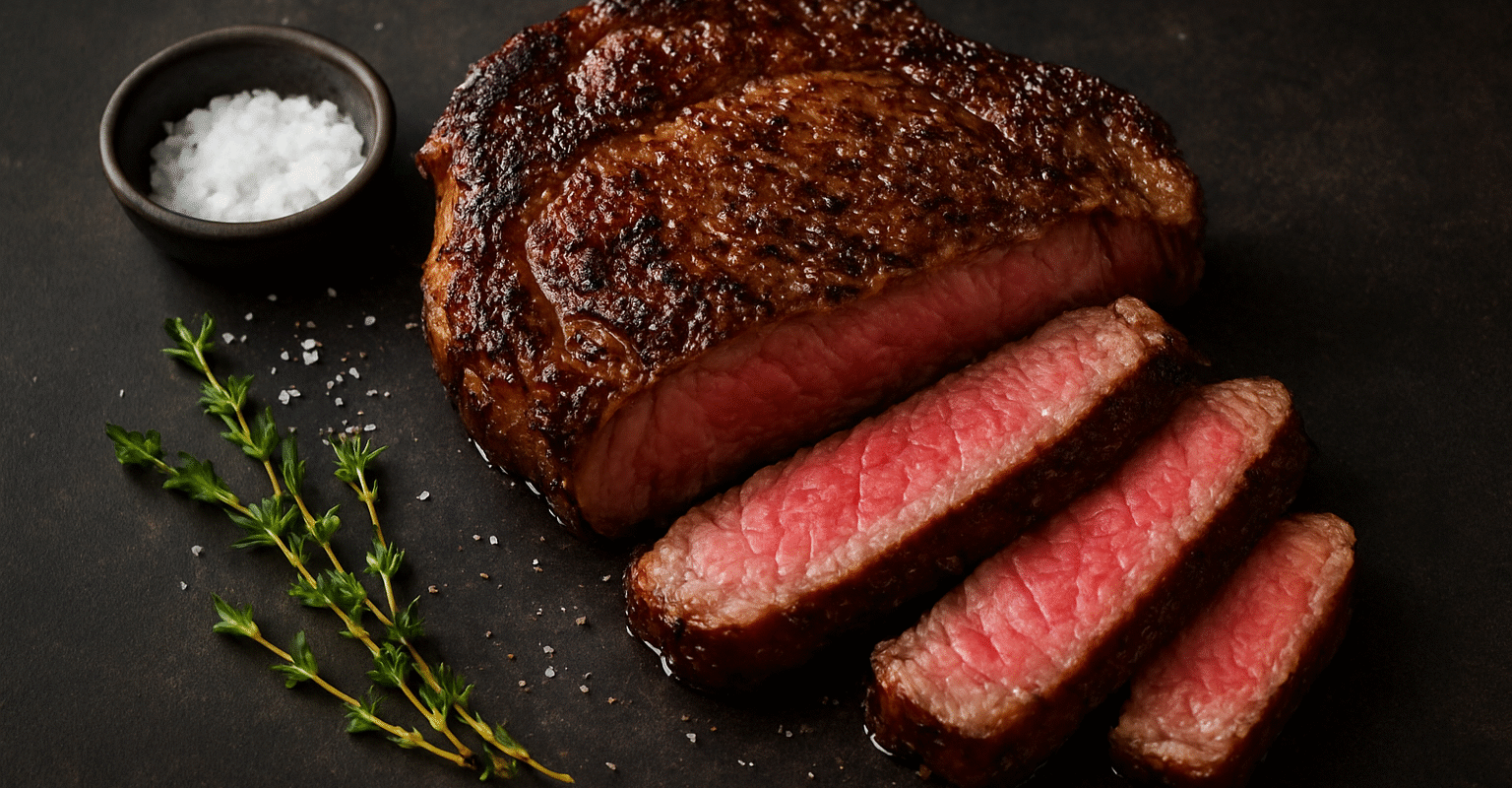Ribeye is one of the most flavorful cuts you can cook at home. Its marbling gives rich taste and keeps the meat tender. Cook it right and you get a crusty sear on the outside with a juicy, pink center.
Choosing the Right Ribeye
Look for even marbling and a deep red color. Thicker steaks cook more evenly and hold their juices. Bone-in adds flavor but boneless is easier to manage on a stovetop or grill. Start with a good piece of meat. Everything else depends on it.
Seasoning Your Ribeye
Coarse salt and freshly cracked black pepper are enough. Coat both sides and let the steak sit at room temperature for 30 minutes. This improves cooking and brings out natural flavor. You can add crushed garlic or thyme but do not overcomplicate it. The steak should be the star.
Cooking the Steak
Heat a heavy skillet or grill until it is very hot. Add a little oil with a high smoke point. Place the ribeye in the pan and do not move it. Let the crust form. Flip once. For medium rare aim for 125 to 130 degrees Fahrenheit. Press gently to check firmness or use a thermometer.
High heat creates a caramelized crust while keeping the inside juicy. Do not fidget with the steak. Moving it prevents searing.
Resting and Slicing
Rest the steak for five to seven minutes before cutting. Juices redistribute and the meat stays moist. Slice against the grain for tenderness. A small knob of butter or a drizzle of oil while resting adds richness.
Serving Your Ribeye
Ribeye works with simple sides. Roasted vegetables, a salad, or potatoes let the steak shine. Focus on flavor and technique. The better you understand heat, timing, and seasoning, the more consistent your results.
